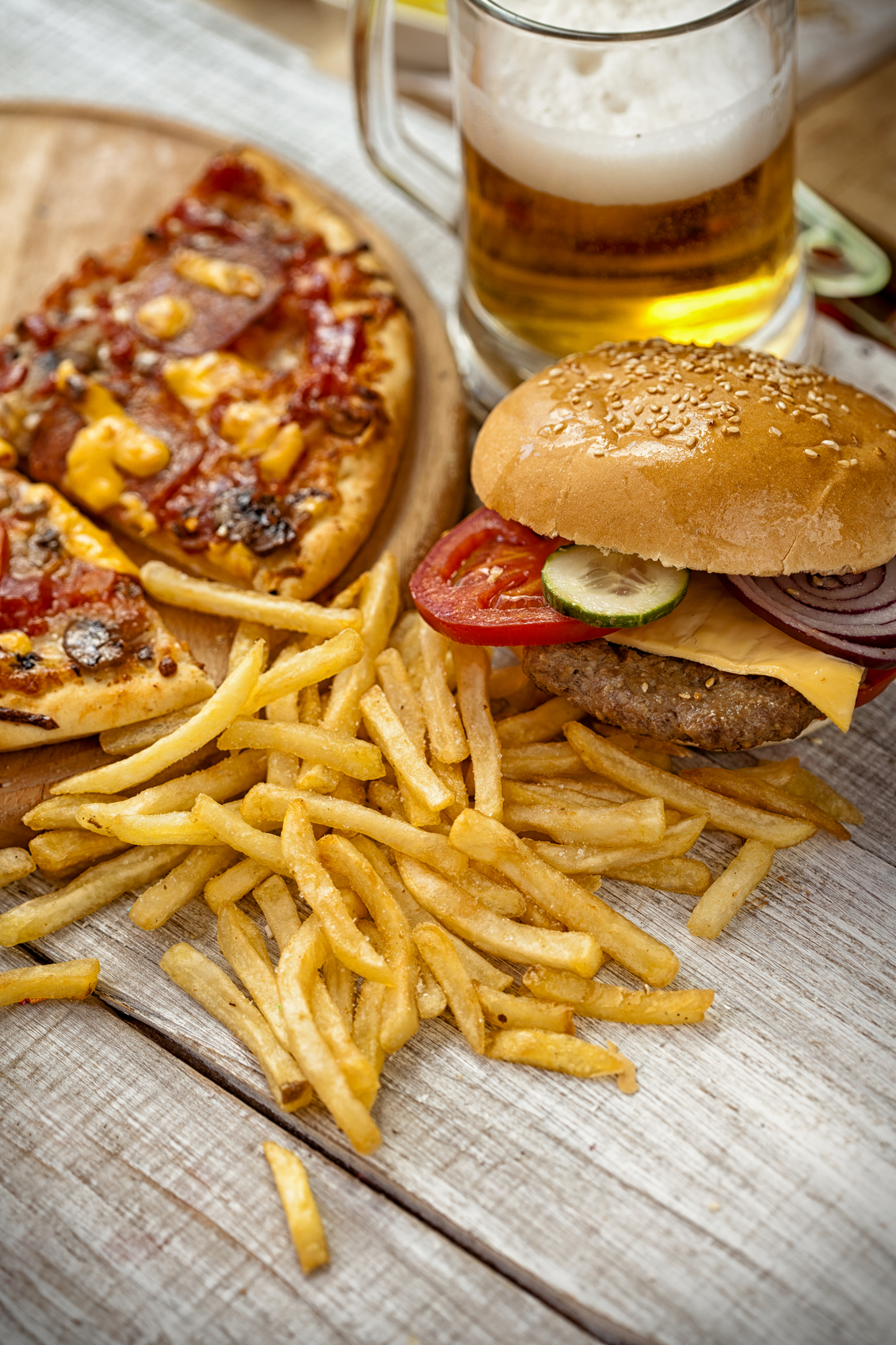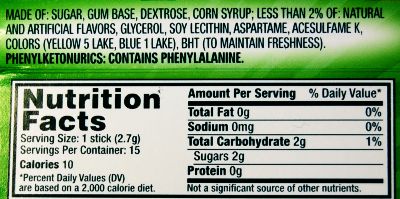45 sugars in food labels
How To Read Food labels for Sugar | My Sugar Free Kitchen On the label check the sugars in the nutrition panel. 5g/ml or less of sugar per 100g/ml = this would count as low sugar content. It means 5% of the ingredients are sugar Between 5g/ml and 20g/ml of sugar per 100 grams = medium sugar content. With 20ml of sugar per 100 ml, this means the product is 20% sugar…not so good. Understanding sugar content on food labels - Diabetes Care Community Understanding sugar content on food labels is important, to ensure that you're consuming healthy amounts. Reading the ingredient lists and nutrition facts tables on packaged foods is a helpful way for you to check what kind, and how much, sugar a product has. Finding sugar content in the ingredients list
How To Spot Sugar On Food Labels | HUNGRY FOR CHANGE One of the easiest ways to recognize sugar on a food label is by recognizing the -ose suffix. When you find words that end in -ose, there's a good chance it is sugar. Sugars ending in -ose include: Sucrose, Maltose, Dextrose, Fructose, Glucose, Galactose, Lactose, High fructose corn syrup, Glucose solids
Sugars in food labels
FDA Looking at Nutrition Facts Labeling of Certain Sugars, Sweeteners Nathan Arnold. 301-796-6248. The following quote is attributed to Susan Mayne, Ph.D., director of FDA's Center for Food Safety and Applied Nutrition: " Last year the FDA stated that we intend ... LABEL READING: CARBOHYDRATES AND SUGARS - Renaissance Nutrition Center ... On food labels, "sugar" also refers to sugar-based sweetening agents, such as high-fructose corn syrup and sucrose. These very sweet sugars are blends of fructose and glucose and do not naturally occur in foods and drinks. At this point, you cannot tell how much sugar the manufacturer has added; when the food labels change in 2018, there ... Reading food labels: Tips if you have diabetes - Mayo Clinic Look for foods with 3 or more grams of fiber. Put sugar-free products in their place Sugar-free doesn't mean carbohydrate-free. Sugar-free foods may play a role in your diabetes diet, but remember that it's equally important to consider carbohydrates as well. A sugar-free label means that one serving has less than 0.5 grams of sugar.
Sugars in food labels. Sugar: Food Sources, Health Implications, and Label-Reading Let's take a look at some labels to practice identifying naturally occurring and added sugars in foods. Below are labels from a 6-ounce serving of plain yogurt. There are 6 grams of total sugar and 0 grams of added sugar listed on the label. What ingredients contain naturally-occurring sugar? Figure 4.37. Added Sugars on the New Nutrition Facts Label | FDA - U.S. Food and ... The new Nutrition Facts label can help you compare and choose foods that are lower in added sugars. Check the label to see if foods are LOW or HIGH in added sugars. 5% DV or less is a LOW source of... Food Labels: Carbohydrates | Home & Garden Information Center The label can claim "no sugar added," yet the beverage or food can contain naturally occurring sugar from fructose in fruits or lactose in milk, as well as sugar in vegetables, cereals, grains, and legumes. Added sugars supply calories but little, if any, of the essential nutrients. Reading Food Labels | ADA - American Diabetes Association Put food labels to work. The Nutrition Facts labels on foods are really the key to making the best choices. We'll cover the basics so that these labels make shopping easier for you. You've heard it all. From carb-free to low-carb, to whole and empty carbs, it's hard to know what it all means. Blood sugar highs and lows aren't always ...
Secret Sugars: The 56 Different Names for Sugar - Virta Health Solid or Granulated Sugars: Beet sugar Brown sugar Cane juice crystals Cane sugar Castor sugar Coconut sugar Confectioner's sugar (aka, powdered sugar) Corn syrup solids Crystalline fructose Date sugar Demerara sugar Dextrin Diastatic malt Ethyl maltol Florida crystals Golden sugar Glucose syrup solids Grape sugar Icing sugar Maltodextrin Finding the Hidden Sugar in the Foods You Eat - Hopkins Medicine The nutrition facts label is required to inform you how much sugar is in a food. However, the label does not separate the amounts of naturally occurring sugar from added sugar, Gager explains. Sugar is found naturally in many nutritious foods, such as fruits and vegetables. Common Names for Sugar on Food Labels | BIOHM Health Many clients think that their diet is low in sugar, but when they start digging into their food journals, it becomes clear that sugar is sneaking around in unexpected places. In fact, a recent study showed that 74% of packaged foods (everything from BBQ sauce to salad dressing and chips) contain sugar. Food manufacturers know that savvy consumers are trying to avoid sugar, so they've gotten ... Understanding food labels | Diabetes UK The labels show how many calories are in the food or drink and are also colour coded to show whether the food is low (green), medium (amber) or high (red) in fat, saturated fat, sugar and salt. The information on the front of the pack also tells you how the portion of the food contributes to the Reference Intake (RI) of an adult.
Decoding Food Labels: Sugar Labeling and What It Means Even though no sugars were added, you cannot assume the final product contains no sugar at all. For example, a mango has no added sugar but contains 46 g of naturally-occurring sugar. You also cannot assume that choosing "no sugar added" labeling over the "sugar-free" labelling means the food is inherently high in sugar. Nutrition Advocates Urge Front-of-Package Labels Highlighting Fat ... The advocates want a more condensed label on the front of packaged-food items that would flag certain health risks, such as high sugar or saturated-fat content. Industry groups say existing labels ... Food labelling - Making Sense of Sugar 5 ways to spot added sugars on food labels When reading the food labels, remember four grams of sugar is equal to one teaspoon. The American Heart Association recommends women consume no more than six teaspoons and men no more than nine teaspoons of sugar per day. 5. Read the label top to bottom Items on food labels are listed in order from largest to smallest quantity.
What are 10 names for added sugars on food labels? added sugars appear on food and drink labels under the following titles, according to the department of health and human services: anhydrous dextrose, brown sugar, cane crystals, cane sugar, corn sweetener, corn syrup, corn syrup solids, crystal dextrose, evaporated cane juice, fructose sweetener, fruit juice concentrates, high-fructose corn …
Types of sugar to look for on food labels | Well+Good "So if the ingredients list reads: 'oats, apples, sugar,' it's made mostly with oats, then mostly with apples, and so on." As Glassman explains it, there are lots of names sugar can masquerade on...
Understanding food labels - Action on Sugar Checking food labels allows you to compare brands, varieties and flavours of products and choose those that are lower in sugars. Adding up the amount of sugars in the products you eat throughout the day will give you an idea of the amount of sugars you are eating. Foods low in sugars have less than 5.0g /100g
Sugar labelling - Food Standards Total sugars includes sugar that is naturally present in the food and sugar that has been added as an ingredient. The Code contains requirements for foods that make claims about sugar. For example, foods that claim to be 'low sugar' cannot contain more than 2.5 g of sugar per 100 mL of liquid food or 5g per 100g of solid food.
Types of Sugar: 56 Common Ones You Should Know - Healthline The two most common varieties used in foods and beverages are: HFCS 55. This is the most common type of HFCS. It contains 55% fructose, nearly 45% glucose, and water. HFCS 42. This form contains ...



Post a Comment for "45 sugars in food labels"